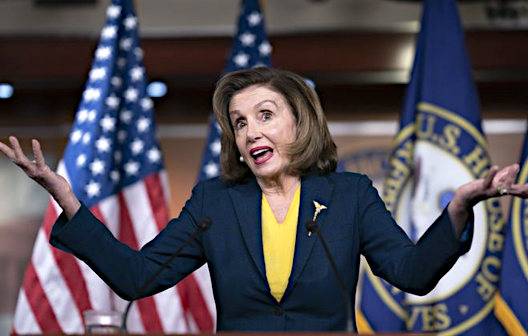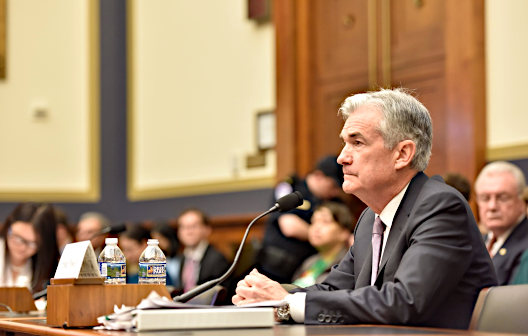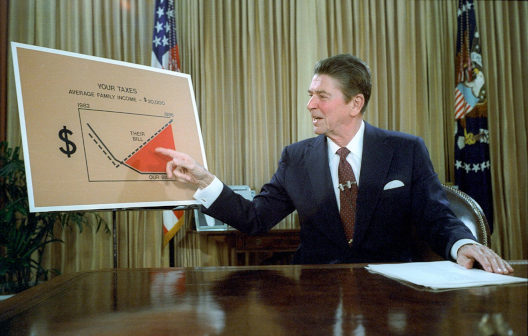Image Credit Marco Verch (Flickr)
We Still Haven’t Reached the Inflation Finale
Inflations have an inbuilt mechanism that works to burn them out.
Government (including the central bank) can thwart the mechanism if they resort to further monetary injections of sufficient power.
Hence inflations can run for a long time and in virulent form. This occurs where the money issuers see net benefit from making new monetary injections even though likely to be less than for the initial one which took so many people by surprise.
Ultimately at some point the cost-benefit calculus shifts in favor of government not blocking the operation of the burn-out mechanism.
Let’s try to work out which model of burnout the Great Pandemic inflation in the US will follow.
|
About the Author:
Brendan Brown is a founding partner of Macro Hedge Advisors (www.macrohedgeadvisors.com) and senior fellow at Hudson Institute. He is an international monetary and financial economist, consultant, and author. He is also a Senior Fellow of the Mises Institute. Brendan is the author of Europe’s Century of Crises under Dollar Hegemony: A Dialogue on the Global Tyranny of Unsound Money with Philippe Simonnot, among other books. |
Our process of discovery starts with Milton Friedman’s observation about the nature of the “inflation gap.” Paraphrasing this we can say that monetary inflation is where the supply of money is persistently veering ahead of demand for money. Ideally this comparison is for base money (rather than broad money).
This gap between supply and demand is always in the future. Like the mirage on a hot road, when we get to the place where we saw the gap it is no longer there. Prices have adjusted upwards (and maybe other economic variables have shifted) so as to lift the demand for money in nominal terms into line with the initial increase in supply.
Meanwhile, however, the issuer has injected a new supply of money. And so the gap is still out there when we look into the future (along the inflation highway).
We can think of the burn-out mechanism as a rise of prices (and possible swing in other variables) which keeps lifting demand for money (in nominal terms) into line with increased supply. The essence of the burn-out mechanism is the destruction of real wealth in the form of money (and government bonds) by the rise in prices. These wealth losses and the need to replenish money holdings in real terms to some extent bear down on demand in goods and services markets.
The laboratory of monetary history provides some insights here.
Take first the extreme case of the German hyperinflation. The government in Berlin, desperate for funds, kept making monetary injections even as the burn-out mechanism functioned. In real terms the revenue gains for government got smaller and smaller as individuals switched out of mark money into dollars instead. Eventually the gains were so tiny from new injections and the social political costs so great that these halted.
Fast-forward to the monetary inflation of World War II. From 1946–48 the Fed made no new monetary injection (monetary base constant) despite prices galloping ahead as driven by the excess of money created during the war. A very mild recession in 1948 and the vast run down in military spending which had occurred meant there was no incentive for the government/Fed to make new injections as consumer prices reached a plateau after their sharp jump. Nominal yields on long Treasury bonds remained close to 2 percent throughout.
It was quite different in the “greatest US peacetime inflation” from the early/mid 1960s to the end of the 1970s. Then the Fed responded multiple times to inflation burnout by new injections; think of 1967–68; 1970–72; 1975–77; and yes, 1980.
Each injection during the Greatest Monetary Inflation had its own distinct cost-benefit analysis. In 67/8 a priority was to hold down the cost of government borrowing in the midst of the Vietnam war; in 70/72 Chair Burns was a top member of the Richard Nixon reelection campaign; later in 75/7 his aim was promoting recovery in the context of challenging elections ahead for the Republicans (1976); in 1980 there was a looming election and recession fright.
Two overriding comments apply to these continued injections through the Greatest Peacetime Inflation.
First, the injectors (the Fed and more broadly the Administration economic team) persistently overestimated the severity of the economic downturn which seemed to be emerging. Given all the revisions in the data since the analyst today would be hard-pressed to use the term severe recession or indeed recession at all in some cases with respect to the episodes of economic weakness in 1970, 1974–75, or 1980s. Yet at the time the injectors saw the current data as justification for interfering with the burn-out mechanism.
Second, a whole Keynesian/neo-Keynesian mythology has developed about how high and rising inflation expectations were the challenge which prevented the monetary authority from allowing a “natural” burnout to take place. It is difficult, however, to substantiate such a claim. In the counterfactual of the Fed resolutely refusing to reinject, expectations would surely have fallen.
Jumping forward to today, Spring 2020, is the Fed at last allowing the burn-out mechanism to work, having consummated its “hawkish turn?”
A key problem in answering this question is how to estimate in a non-anchored monetary system what burnout is occurring. How to measure demand for money in a system which has become so distorted?
Examples of such distortion include bank reserves, a large component of monetary base, paying interest and at a rate above market. Base money has lost much of its special qualities in an environment where banks or individuals are confident of liquidity provision, whether in form of “too big to fail,” “lender of last resort,” or “deposit insurance.”
Without any precision we can say that substantial monetary inflation has emerged during the pandemic with prices of goods and services surely rising by more than what could be explained by supply shortages and dislocations such as would occur under sound money regimes. But by how much?
Whatever the unmeasurable inflation gap has been the near 8 percent rise in consumer prices in the past year has surely helped narrow it the nearer we get to the point in the highway of inflation where we initially saw it.
Chief Powell is now telling us that he has no intention of accommodating inflation. For this top monetary bureaucrat and his colleagues this means projecting a series of rises for the fed funds rate which seems to be impressive both whether measured by frequency or cumulative size. No one, of course, has a clue about how interest rates would be moving in the counterfactual case of just allowing the burnout to take place and no new monetary injections.
So, it is far too early for any sober-rational commentator to announce that the burn-out mechanism is now healthily at work and will accomplish its purpose. And yes, it is possible that the Fed will at some point constrain (by mistake amidst the general fog) the money supply such that this lags behind demand for money, meaning a period of monetary deflation.
It is hard to form a diagnosis of the monetary inflation gap based just on contemporaneous readings of CPI inflation or taking the speculative temperature in asset markets.
Notably the distortions of price signals in asset market as caused by monetary inflation can persist well beyond the closing of the inflation gap—as was the case with both the crash of 1929 and of 2008.
The central scenario of this writer is that the pandemic monetary inflation theatre still has several acts before its finale.
One of these would feature the apparent onset of recession and asset deflation to which the Fed responds ultimately by further inflationary injections of money. And even though there is an inflation curse on all fiat monies, one act entitled flight from the dollar will most likely come into the schedule before this monetary theater season is over.
Suggested Reading
 How the Cost of Owning a New EV Could Also Climb Quickly
|
 Nancy Pelosi’s Coattail Investors Get an Update
|
 Since 2008, Monetary Policy Has Cost American Savers about $4 Trillion
|
 Lessons from How the Back of Inflation Finally Broke in 1982
|
Stay up to date. Follow us:

|

